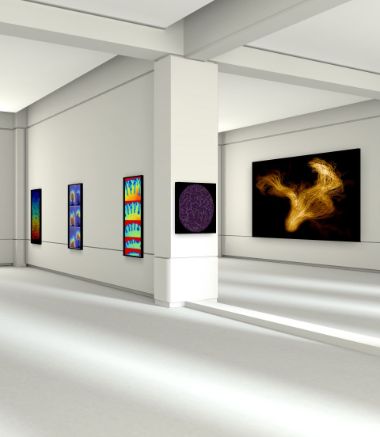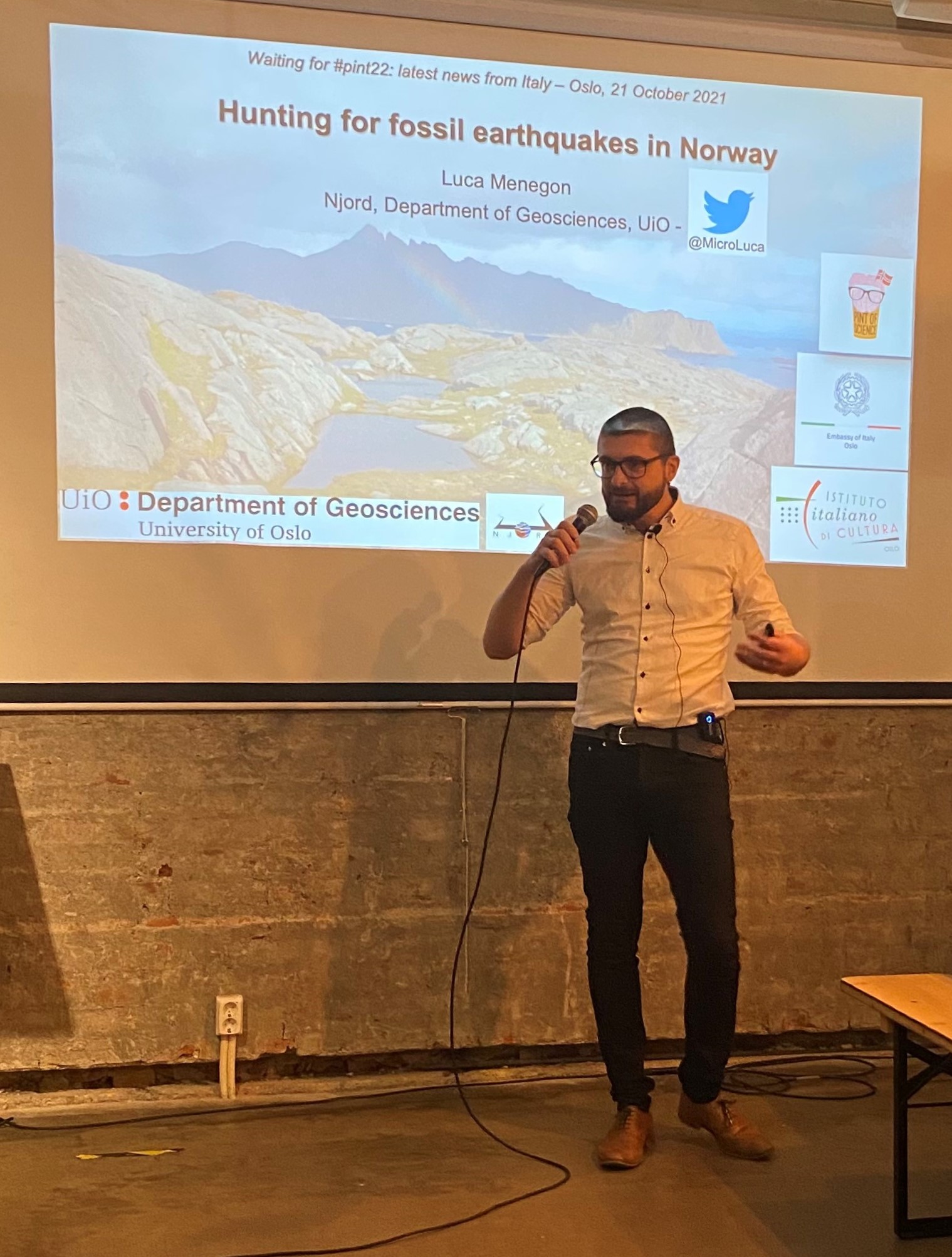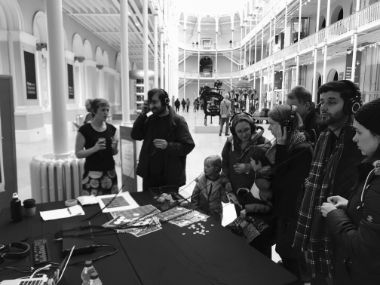To disseminate our research and findings is an important part of Njord’s mission. We communicate to the international academic world and to the public, both in Norway and abroad.
We aim to convey our knowledge and to increase appreciation and understanding of science through our outreach projects. To achieve this goal, we collaborate with media, renowned artists and industry partners. We encourage all our researchers to communicate their work, and several of Njord’s researchers are particularly skilled at this task.
Our research is curiosity-driven and many of our scientific results have direct societal impact. The research is directly relevant to a wide range of applications, including transport of water, pollutants and hydrocarbons in porous and fractured rocks, carbon sequestration and storage, avalanche dynamics, earthquakes and other geohazards. This makes our research relatable to the public.
Visual Art
Through many years our researchers have had a ongoing collaboration with artist Ellen Karin Mæhlum, resulting in several projects. Mæhlum is a renowned visual artist and printmaker, and her work has been acquired by public collections, including the National Gallery in Oslo and the Museum of Contemporary Art in Oslo. The lines between the various series are originating from Mæhlum's multifaceted concern with nature and experimental close encounters with the technical aspects of printmaking.

Graphical print by Ellen Karin Mæhlum covering the front page of Physics Today Volume 74, issue 4, April 2021.

But sometimes our research can be stunningly beautiful just as it is. Albert Einstein himself once said “The greatest scientists are artists as well”. Over the years we have come across a tremendous collection of striking visual patterns, stunning compositions of matter and motion brought to us by nature itself. So it was with great pleasure PoreLab opened a virtual exhibition (kunstmatrix.com) with some of the most beautiful moments captured. Even though the pictures carry a good amount of scientific information, they are presented in the gallery quite simply as beautiful collages of shape and color. And maybe are the most intriguing pieces of art also the most intriguing pieces of science?
Talks
To do great science you need to be smart, but to be able to simplify the complex matters and communicate it to a general audience you need to be even smarter. Luckily we have highly skilled communicators amongst our scientists, and they frequently give popular science talks. One of this talks was given by prof. Luca Menegon on the "A Pint for Science: Latest Science News from italy"-event in Oslo fall '21. The event was recorded, and the talk can be watched on youtube.com (Menegon's talk starts 1h and 38 min in).

Sound Art
Just like in science we can not only rely on what we see, sometimes we must use other senses, like hearing. In November 2018, Karen Mair ran a Listening Lab during Science Saturday public outreach event, at the National Museum of Scotland in Edinburgh. The Listening Lab 'Rock music - Exploring Geology using sound’ was linked with the popular exhibition Rip It Up: The Story of Scottish Pop and featured a selection of geoscience data sonifications (where data is turned into sound) created during a collaboration with Karen Mair had with composer Natasha Barrett over recent years.

Listeners exploring the Geology Jukebox at Science Saturday, National Museum of Scotland, November 2018. Photo by Clare Bond.

Books
Physicist at Njord, Anja Røyne, was in 2020 awarded the Faculty's Communication Award by the Dean because of her interest and ability to do outreach in addition to being an exceptional researcher. Amongst other outreach activities she has published three books, one of which received Brageprisen, a prestigous Norwegian, literary award. On her list of published, popular science books are: "The elements we live by" (2018), "Physics simply explained" (2020) and "Hot planet, cool minds" (2020). The book "The elements we live by" have been translated to 10 languages, and sold to 11 countries.
Movie
We are curious and like to explore new kinds of collaborations. In the documentary ‘Pseudotachylyte’, film maker Heidi Morstang follows a group of researchers, including Njord's Luca Menegon, on their expedition in Lofoten. The documentary is now available on vimeo. Morstang portrays the scientists exploring landscape; through the microscopic view of the world to an understanding of deep time. The beautiful images from picturesque Lofoten, the slow pace and the observing point of view gives the documentary an almost meditative effect and gives the audience room for reflection.

Photo: Patrik Säfström
Communication in Media
Another important part for us of communicating our research is engaging people whereever they are and in the daily life. For this reason we are on Twitter, and we frequently write popular science articles we write for magazines, newspapers and blogs..
Here are some examples:
- Dunkel, K. G. The Grid - A serpentine pseudomorph after carbonate (EGU Blogs)
- Galland, O. En vulkan våkner på Island. Er vi beredt? (Aftenposten Viten)
- Galland, O. Slik kan Island passe på vulkanen. Aftenposten Junior, July. [News article]
- Haffner, F., Couturier, M., & Dziadkowiec, J. Crystals: From rock candy to rock(et) science. (Espurlette)
- Nielsen, B. F., Linga, G., Olsen, K. S., Simonsen, L. Vejen til frihed. (Weekendavisen)
- Sveinsson, H. A. Gasshydrater: fra laboratoriekuriositet til klimatrussel. (Naturen)
- Flekkøy, Eirik G. Har vi fått besøk av en kosmisk hybelkanin? (Aftenposten Viten)